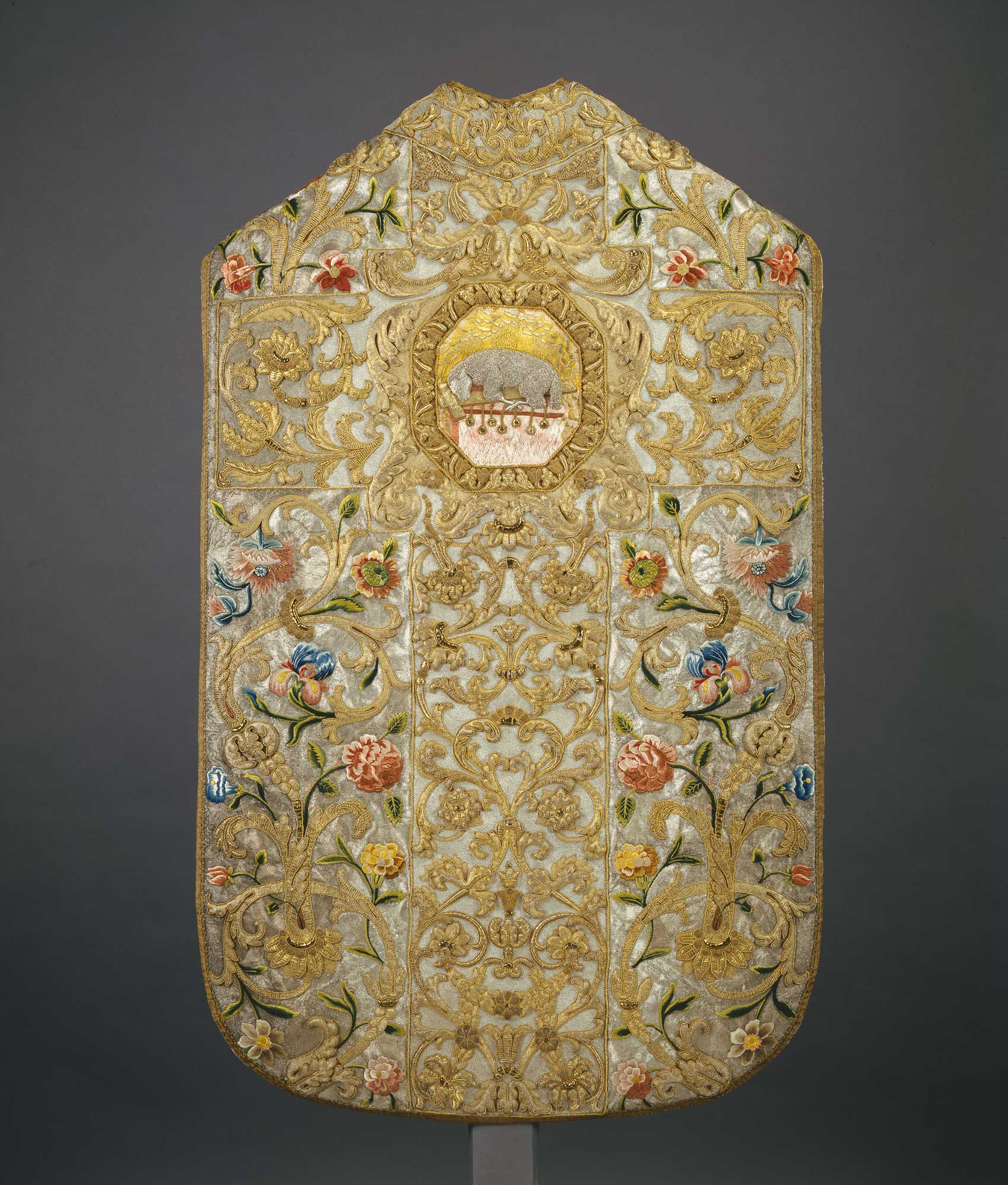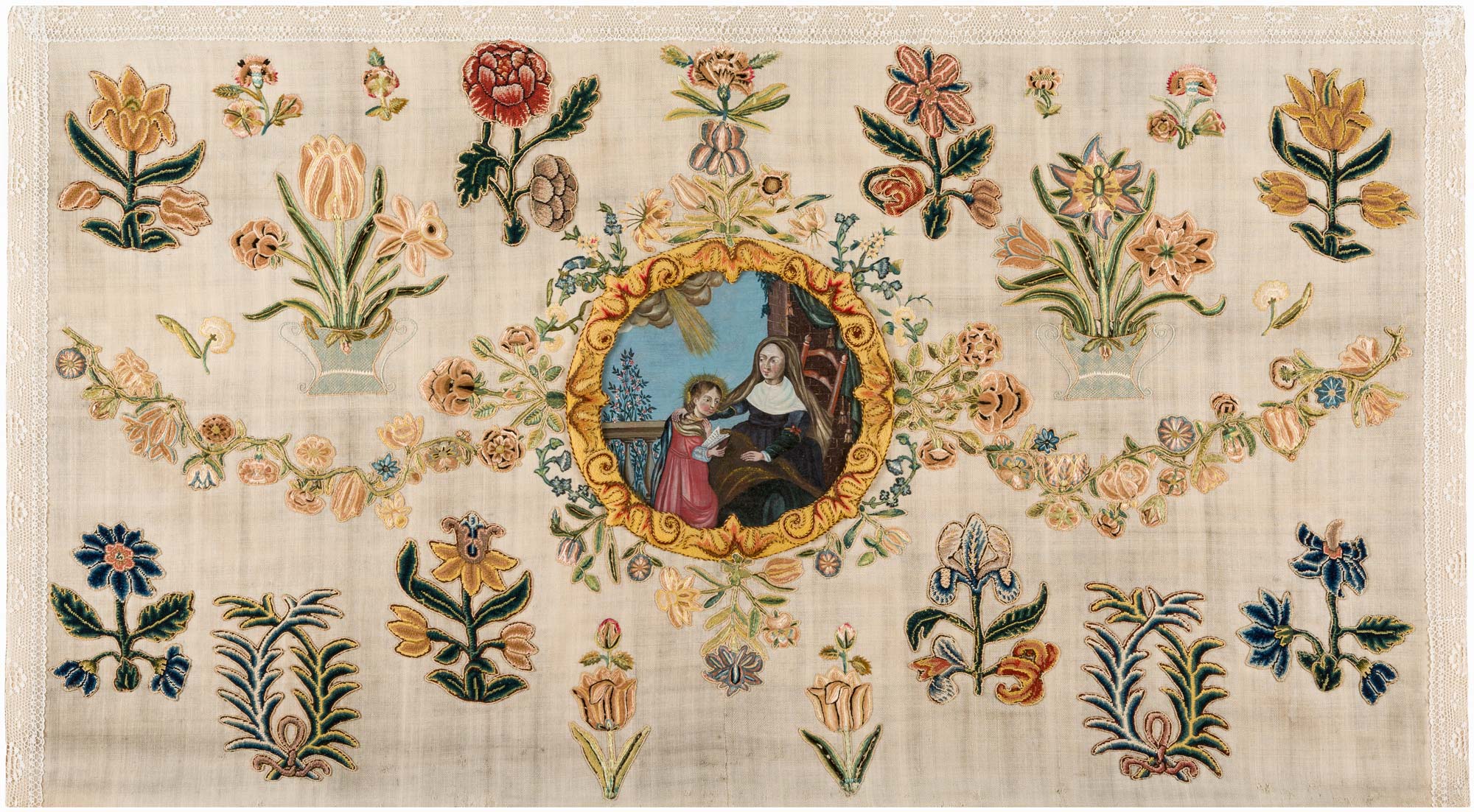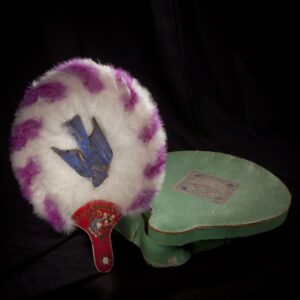Marie Lemaire des Anges (1641–1717)

Marie Lemaire des Anges (née Marie Lemaire) (attributed) and the Ursuline Workshop of Quebec, Parement d’autel dit de la Nativité (Altar Frontal Known as The Nativity), second half of the seventeenth century
Wool and polychrome silk thread, spun and frisé gold and silver thread with foil, purl and sequins, filé riant with a silk core, bobbin lace with spun, frisé and silver foil thread, and distemper on silk (medallion), 95 x 261 x 4 cm
Musée des Ursulines de Québec, Pôle culturel du monastère des Ursulines, Quebec City
The works of embroiderers are not signed. Of the forty-seven pieces adorning the stone altar tombs in the chapels and churches of the Ursuline monastery since the seventeenth century, Parement d’autel dit de la Nativité (Altar Frontal Known as The Nativity) showcases the extraordinary contribution in Quebec City of the Ursuline nun Marie Lemaire des Anges, née Marie Lemaire. Like a “painting with a needle,” this textile masterpiece exudes magnificence through its luminous and shimmering background, composed of glass beads and silver threads that enhance the richness of the embroidered motifs. The design is further embellished with a variety of naturalistic flowers, as well as high-relief embroidery framing the medallion and the cornucopias overflowing with fruit. The ornamental abundance of plant motifs, scrolls, and arabesques, along with the nativity scene in the medallion (painted in tempera after a French print), attests to the technical refinement of European embroidery, which flourished in Quebec City under the skilled needlework of Marie Lemaire des Anges.


The French embroiderer possessed exceptional expertise, which she had learned at her father’s embroidery workshop near the Louvre Palace in Paris. Needlework was an essential part of the education provided to young girls from affluent families, and Marie Lemaire benefited from this training before further refining her craft with the Ursulines. She joined the convent as a boarding student at the age of thirteen and took her vows in 1657.
Upon her arrival in New France in 1671, Marie Lemaire des Anges established a workshop that excelled in the creation of liturgical ornaments. She received financial support from her family and influential devotees, who also donated luxurious fabrics imported from Paris—such as satin, silk velvet, and moiré—as well as silk, silver, and gold threads. Marie de l’Incarnation (1599–1672), the founder of the Ursuline convent, had introduced the practice of embroidery in the colony, and the magnificent Parement d’autel dit de l’éducation de la Vierge (Altar Frontal Known as The Education of the Virgin), second half of the seventeenth century, is attributed to her.
Thanks to Marie Lemaire des Anges, who remained in Quebec City for the rest of her life, the art of embroidery experienced a golden age, supported by the contributions of around thirty nuns, that lasted until the eighteenth century. Altar frontals and ecclesiastical vestments—copes, chasubles, and dalmatics, with their accessories—were designed and crafted in harmony with the veneration of saints, the use of relics, and the miracles that fuelled the mystical fervour of Catholic devotion.

 About the Author
About the Author
 More Online Art Books
More Online Art Books
 Acknowledgements
Acknowledgements